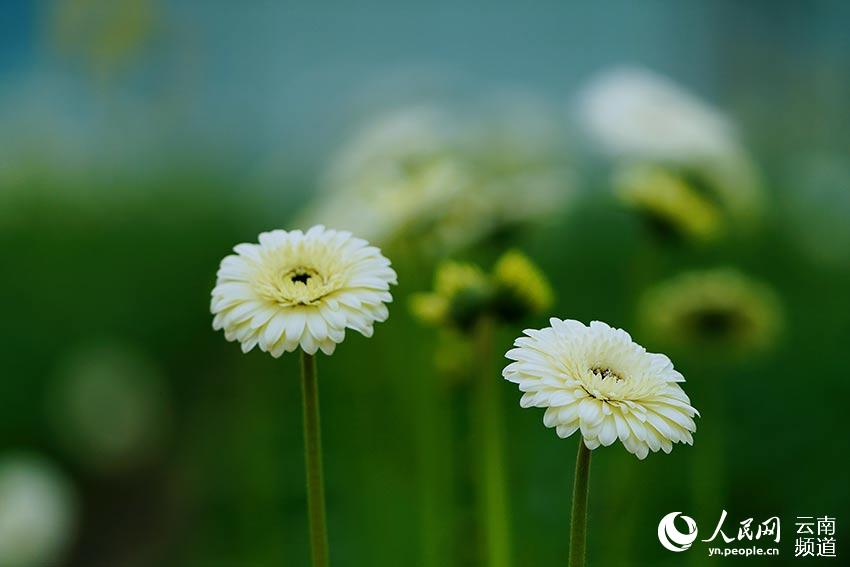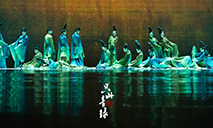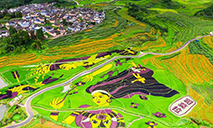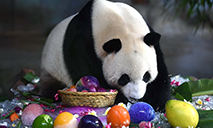City in SW China’s Yunnan makes headway in flower breeding
 |
| Photo shows blooming Barberton daisies in a national modern agricultural industry park in Kaiyuan city, southwest China’s Yunnan province. (Photo/Li Haiqing) |
A national modern agricultural industry park in Kaiyuan city, southwest China’s Yunnan province, has made remarkable scientific and technological progress in flower breeding in recent years.
So far, the park has independently developed 29 varieties of chrysanthemum and wintersweet flowers, introduced and developed 168 new varieties of flowers having independent intellectual property rights, and preserved more than 1,000 copies of germplasm resources. It also produced 265 million flower seedlings during the period from January to July, with an output value of 870 million yuan (about $134.5 million). The park has also patents for the seeds of high-quality flowers such as roses, Barberton daisies, butterfly orchids, and chrysanthemums, breaking the long-standing monopoly of foreign flower varieties.
Over the past few years, the park has attracted 25 well-known flower enterprises both at home and abroad, including Schreurs and Anthura from the Netherlands, and has established long-term cooperation mechanisms with eight famous Chinese universities and research institutes such as the China Agricultural University, Nanjing Agricultural University (NAU), and Chinese Academy of Agricultural Sciences.
Last year, NAU set up a workstation at the park with experts led by the university’s president, Chen Fadi, who specializes in the genetic breeding of chrysanthemum. The workstation has 5,000-square meter intelligent greenhouses, which are equipped with intelligent water and fertilizer control systems, ventilation and temperature control devices, and other facilities.
This May, six doctoral and graduate students majoring in horticulture were stationed at the workstation to conduct research on the breeding of new chrysanthemum varieties and the protection of their germplasm resources.
The workstation has a repository for the preservation of the flower’s germplasm resources on the park’s premises, and plans to build the world’s largest germplasm bank of chrysanthemum by transplanting 5,000 specimens of seeds collected and preserved by NAU, over 3,800 specimens preserved by a local company and about 280 specimens of traditional Chinese chrysanthemum seeds.
“Equipped with advanced facilities, the workstation provides reliable research data, which greatly facilitate the research and development of new varieties and the protection of germplasm resources,” said Ma Xu, director of the management bureau of the park.
 |
Photos
 Dance show saluting traditional culture of the Song Dynasty makes its debut
Dance show saluting traditional culture of the Song Dynasty makes its debut Village in SW China’s Yunnan embraces prosperity through agricultural tourism
Village in SW China’s Yunnan embraces prosperity through agricultural tourism Eighth birthday for pair of giant pandas celebrated in Haikou, Hainan province
Eighth birthday for pair of giant pandas celebrated in Haikou, Hainan province Olympic gold medalists portrayed in Shanxi artist’s polymer clay sculptures
Olympic gold medalists portrayed in Shanxi artist’s polymer clay sculptures
Related Stories
Copyright © 2021 People's Daily Online. All Rights Reserved.






